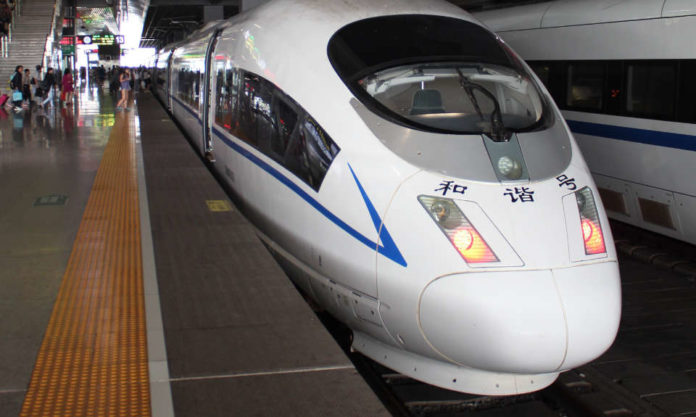It has been a busy month for China’s high-speed railway network, with no less than eight new lines opening, including the route that links Beijing with two of the main venues for the 2022 Winter Olympics.
Many of the new lines are providing much-needed improvements to infrastructure connectivity in remote parts of the country. They include places such as Gansu Province in the northwest, and Guizhou and Sichuan provinces in the southwest. There are also some nearer to home too, in both our very own Jiangsu Province and neighbouring Anhui.
Public attention, however, is very much focused on the route from Beijing to Zhangjiakou, that is a main venue for the 2022 Winter Olympics. Its opening on schedule was something of a matter of national pride, it being 110 years since the inauguration of its predecessor, the Jinjiang Railway that was the first railway in China built entirely by the Chinese.
State broadcaster CCTV even jumped over the Great Firewall to post the first train’s arrival in Zhangjiakou on YouTube.
On account of its status as a Olympic venue, the route has been designed for 350 km/h operation. Trains from Beijing North to Zhangjiakou can make the journey in as little as 47 minutes. The trip previously took more than 3 hours.
As The Nanjinger previously reported, the new line features multiple engineering marvels, including the world’s deepest underground high-speed railway station. Cut out of the mountain beneath Badaling, the station shall make visiting the Great Wall a cinch.
- Nanjing Home to World’s Fastest Train (and Second Fastest, btw!)
- “Ghost Stations”; Nanjing’s Forgotten High-Speed Rail Stops
An additional branch line runs on to Taizicheng that shall host all 2022 Olympic skiing events other than alpine skiing.
Elsewhere, Sichuan Province received another link with its neighbour, Guizhou Province, in the form of the Yibin to Guiyang high-speed route. The opening on 16 December marked completion for the Chengdu to Guiyang line, providing for a 3 hour journey time on the 648 km route. Ultimately, the line forms a section of the Lanzhou to Guangzhou corridor.
Up north, the giant 671 km route from Dunhuang in Gansu Province to Golmud in Qinghai Province is now complete, with the opening of the section from Subei to Mahai on 18 December. As an important connection between the Qinghai-Tibet Railway and the Lanzhou-Xinjiang Railway, the line is a key player in the Belt and Road Initiative. The line also knocks 10 hours and 1,100 km off the journey between Xinjiang and Tibet, reported state media agency, Xinhua.
In the south of China, another long route began operations on 26 December. In Jiangxi, the provincial capital of Nanchang was linked with 418 km-distant Ganzhou, a line that is hoped to one day be part of a proposed Beijing to Hong Kong line.
- “The Hulk” Debuts in Nanjing; Salaries Cut Over Train Failures
- Six Caught Taking “K-Powder” in Toilets of Train in Nanjing
Over in neighbouring Hunan Province, the city of Changde received a link with Qianjiang in Chongqing Municipality. The 335 km route is designed for 200 km/h operation.
Much closer to home, Hefei, the capital of Anhui province, was linked to Shangqui in Henan Province to its west, with a new high-speed train service taking a little more than 2 hours.
Finally, here in Jiangsu, the northern city of Xuzhou has been linked with coastal Yancheng, with a line that opened on 16 December. Designed for 250 km/h operation, the fastest option on the 313 km route takes an hour and a half.
Crossing this route is the under-construction Lianyungang to Zhenjiang route, that will be a major north-south high-speed artery. The section of the line from Dongji to Huai’an also opened on 16 December, while the extension to Zhenjiang is expected to open this August.
The opening of the year-end routes meant that in 2019, China added more than 5,000 additional kilometres to the world’s largest high-speed rail network, making for a total of 35,000 km, as the China State Railway Group stated to local media.









